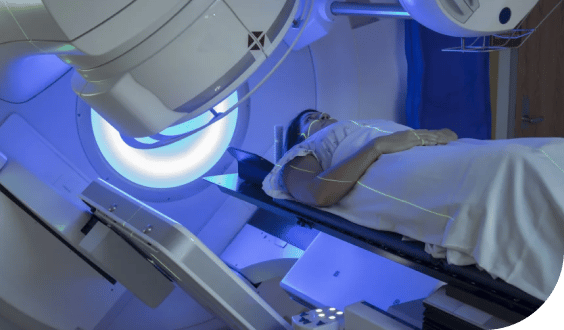Stage 1 Mesothelioma
Stage 1 is the earliest stage of mesothelioma. In general, the cancer is localized to the area where it first developed; it has not yet spread to the lymph nodes or other parts of the body. Patients with stage 1 mesothelioma often have the best prognosis and treatment options.
Home » National Mesothelioma Law Firm » Mesothelioma Cancer » Stages » Stage 1
Stage 1 is the earliest stage of mesothelioma. Patients whose cancer is found when it’s in stage 1 generally have the best prognosis and the most treatment options.
What is Stage 1 Mesothelioma?
Cancer is usually described using four stages. These are reported using numbers, with stage 1 being the earliest and stage 4 representing the most advanced cancer. (The stages are sometimes written using Roman numerals, from stage I to stage IV. This doesn’t change the meaning.)
A cancer’s stage is determined using a variety of factors, including the size and extent of the original tumor as well as whether it has spread to lymph nodes or to more distant parts of the body. Some cancers, including pleural mesothelioma, have specific and clearly defined staging systems. For others, including peritoneal mesothelioma, this has not yet been developed, and the stage may be described in different ways by different doctors or cancer centers.
In general, stage 1 cancers are localized to the area where they first developed. For mesothelioma, this is the membrane where it first arises (usually the pleura or peritoneum) and the tissues that immediately surround it. A cancer found in stage 1 has not yet spread to the lymph nodes, nor to other parts of the body.
Stage 1 Pleural Mesothelioma
Pleural mesothelioma is the only type of mesothelioma that has a formal staging system, which is known as the TNM system. It uses three characteristics of the cancer to determine the stage: the size and location of the original tumor (T), whether it has spread to lymph nodes (N) and whether it has undergone metastasis, which is spread to more distant organs (M).
The International Association for the Study of Lung Cancer has published a set of very specific criteria for staging of pleural mesothelioma. For stage 1, the tumor is localized to the pleura and the immediately surrounding area. This stage is further subdivided into two:
- Stage 1A pleural mesothelioma involves only the pleura itself, on just one side of the body. An older version of the staging system distinguished between tumors that affected just one layer of the pleura and those that affected both layers. The current version has eliminated that distinction, because research has shown that it doesn’t affect patient outcomes. Any patient with mesothelioma affecting only the pleura is in stage 1A.
- Stage 1B pleural mesothelioma involves other tissues that are immediately adjacent to the pleura, such as the lung, the chest wall, the diaphragm, the pericardium (the membrane that covers the heart) and/or fat or connective tissue in the center of the chest.
Patients in stage 1A or stage 1B have no evidence of spread to lymph nodes, nor is there spread to more distant parts of the body.
Stage 1 Peritoneal Mesothelioma
There is no formal staging system for stage 1 peritoneal mesothelioma, and the staging of this cancer may be reported differently by different doctors.
One commonly used system is known as the modified TNM system. This system uses the peritoneal cancer index, or PCI. The abdomen is divided into 13 regions, and the amount of tumor tissue present in each region is scored from 0 to 3. The numbers are then added together to create a final PCI between 0 and 39. In patients with stage 1 peritoneal mesothelioma, the PCI is between 1 and 10, and there is also no evidence of spread to lymph nodes or outside of the abdominal cavity.
Diagnosis of Stage 1 Mesothelioma
A cancer’s stage is determined as part of the diagnostic process. A number of different factors may be used to classify a particular cancer as stage 1. These may include:

Imaging studies. Using the results of studies like CT scans and/or MRIs, doctors look for evidence of tumors in various parts of the body.
- A positron emission tomography scan (PET scan) is a specialized type of imaging study that uses a tracer to look for cancer cells throughout the body. This is helpful in finding very small metastatic tumors.
A cancer’s stage is determined as part of the diagnostic process. A number of different factors may be used to classify a particular cancer as stage 1. These may include:
The stage of a cancer determined by these factors is known as the clinical stage. However, in some cases, the stage of a cancer may change after a patient undergoes surgery. This updated stage is known as the pathological stage.
For example, a patient may be believed to be in stage 1 before surgery. During the procedure, biopsies of lymph nodes are taken. On examination by the pathologist, there is cancer found in these lymph nodes. The patient’s stage would then be increased to stage 2 or 3, depending on which lymph nodes had cancer. This is called upstaging and has been found to occur in up to 80 percent of cases of early-stage pleural mesothelioma.
Stage 1 Mesothelioma Life Expectancy
In general, patients whose cancer is found in stage 1 have the most favorable prognosis. When considering all patients with stage 1 pleural mesothelioma, the average life expectancy is about 21 months. Some studies have found that for patients who are treated using surgery with curative intent, the life expectancy is around 30 months.
For stage 1 peritoneal mesothelioma, the five-year survival rates have been reported to be as high as 87 percent. This is largely due to the use of a highly effective treatment modality called CRS-HIPEC, which combines surgery with chemotherapy. Patients in stage 1 are generally eligible for this treatment.
Treatment for Stage 1 Mesothelioma
Because stage 1 mesothelioma has not yet spread widely throughout the body, it’s generally considered resectable, meaning that it could be removed by surgery. Most commonly, patients in stage 1 undergo a surgical procedure with curative intent, meaning that the surgery is intended to eliminate the cancer and extend the patient’s life. Despite the name, the surgery rarely removes the cancer entirely, but some patients gain a significant amount of additional life expectancy. Surgery is usually combined with other treatment modalities, such as chemotherapy and/or radiation therapy.
Stage is not the only factor that will be taken into account when forming a treatment plan. The cell type of the cancer, the patient’s age and physical condition, and the patient’s preference are also important and can influence the specific treatments that are chosen.
Stage 1 Pleural Mesothelioma Treatment Options
The treatment plan for a patient with stage 1 pleural mesothelioma may include:

Surgery. Surgical options for patients in stage 1 include extrapleural pneumonectomy (EPP) or pleurectomy/decortication (P/D). In EPP, the surgeon removes the pleura, the lung and other tissues on the affected side; in P/D, the surgeon removes the pleura along with as much tumor tissue as possible, while leaving the lung itself and other healthy tissues in place.
Chemotherapy. There are a few options for the use of chemotherapy in stage 1 mesothelioma patients:
- Intraoperative chemotherapy, also known as hyperthermic intrathoracic chemotherapy (HITHOC). This involves infusing the chemotherapy drugs into the thoracic cavity during surgery. This is a newer option that has shown promise for treating pleural mesothelioma.
- Adjuvant chemotherapy, in which the chemotherapy drugs are given after surgery to target any cancer cells that may have been left behind.
- Neoadjuvant chemotherapy, in which chemotherapy is given before surgery in order to shrink a tumor and make it easier to remove.
Radiation therapy. This is commonly used after surgery to target any cancer cells that were left behind and reduce the chances of the tumor growing back.

Photodynamic therapy (PDT) is a newer treatment option that’s still considered experimental in mesothelioma patients, although it’s already been approved for use in other cancers. PDT uses a drug called a photosensitizer, which is activated by exposure to certain wavelengths of light. This is given by IV about two days before the surgery, and it accumulates in cancer cells. During surgery, after removing as much cancer tissue as possible, the surgeon shines a light of the correct wavelength into the thoracic cavity to activate the drug inside of any remaining cancer cells. When activated, the photosensitizer becomes toxic, so it destroys the cancer cells.
There are some additional treatment options that are approved for use in certain mesothelioma patients, including immunotherapy and tumor treating fields. Patients with resectable cancers are not considered candidates for these options. If surgery is an option, then surgery is generally the preferred treatment. However, if the initial treatment plan is not effective at treating the cancer, then these alternative treatments may be considered. Patients with the sarcomatoid cell type are typically not considered good candidates for surgery, even in stage 1. These patients are usually treated using the same options available in stage 3 or stage 4, with systemic chemotherapy usually being the primary treatment modality. Similarly, some patients aren’t healthy enough to withstand an invasive surgical procedure due to advanced age or other medical conditions. They may be treated using chemotherapy and/or other options.
<span data-metadata=""><span data-buffer="">Stage 1 Peritoneal Mesothelioma Treatment Options
Most patients with stage 1 peritoneal mesothelioma are treated using a procedure known as CRS-HIPEC. This procedure is highly effective at extending life in these patients.
- Intraoperative chemotherapy, also known as hyperthermic intrathoracic chemotherapy (HITHOC). This involves infusing the chemotherapy drugs into the thoracic cavity during surgery. This is a newer option that has shown promise for treating pleural mesothelioma.
- Hyperthermic intraperitoneal chemotherapy (HIPEC) uses a warmed solution of chemotherapy drugs. After the surgeon has removed as much cancer tissue as possible, the solution is infused into the abdomen and left there for a period of time. The drugs are then washed out, and the incisions are closed. This procedure delivers the chemotherapy drugs directly to the areas where the cancer cells are present, and has been shown to be highly effective.
In general, CRS-HIPEC is highly effective in treating stage 1 peritoneal mesothelioma. The details of the surgical technique are important, and may influence the final outcome. Choosing a surgeon with extensive experience in performing this specific procedure is most likely to lead to the best possible outcome.
By submitting this form, you agree to our terms & conditions. Please read the full disclaimer



